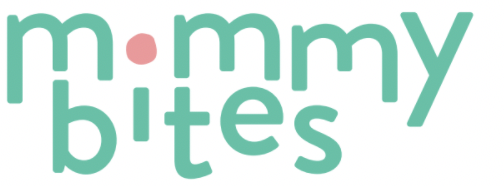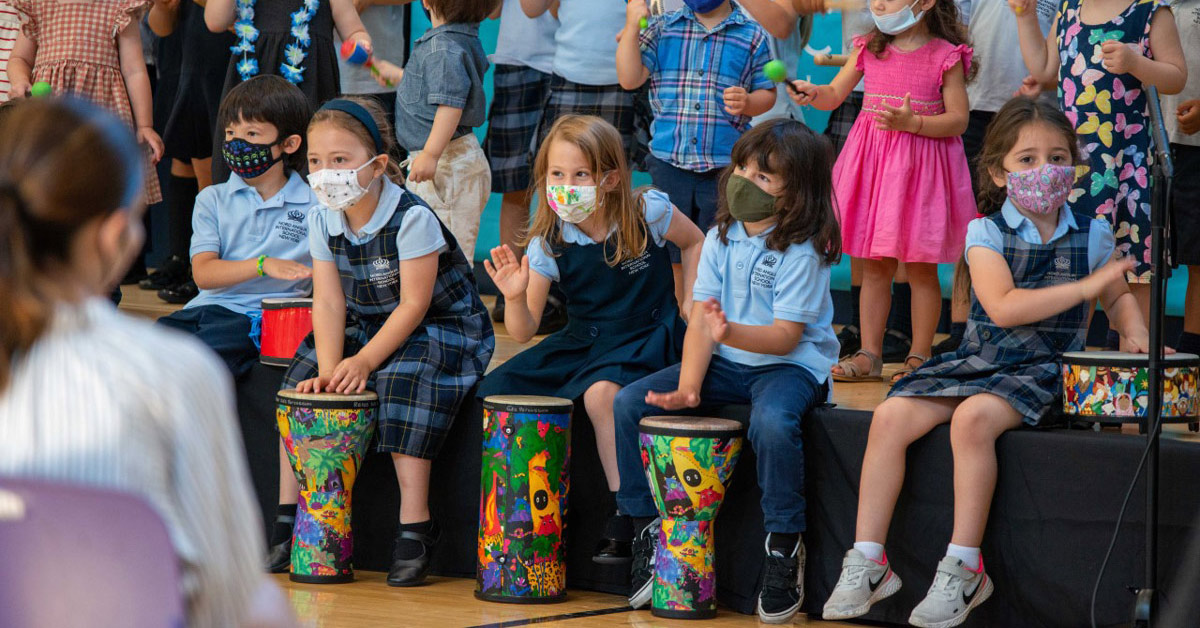
The Importance of Teaching Social Skills
While academics are a large part of school, there are other factors that will determine the future success of students—especially in our rapidly changing world. Strong social skills, leadership capabilities, and the ability to adapt and think critically are crucial to professional prowess—and should be instilled at a young age.
In fact, developing strong social skills should be a fundamental part of the first few years of school—as kids make new relationships, navigate difficult situations, become comfortable in their new routines, and learn to cooperate with their peers. Although children practice social skills from birth—first with their parents and then with others—developing these skills will help them become happy, confident kids who have a positive attitude towards ongoing challenges.
Early education teachers should model communication and problem-solving skills by asking questions, sharing stories about a range of situations, and encouraging kids to talk about their feelings. They should also inspire students to find their voice and figure out their interests—ideally through child-led play, in which teachers accompany the child rather than lead them.
At Nord Anglia International School New York, the Early Years department is not only child-led but also focuses on three core areas of development:
- Personal, social and emotional development: This helps raise confident, happy and secure students who are able to manage their feelings.
- Communication and language: Students need to be able to communicate and understand their peers.
- Physical development: This helps build stronger bodies and is essential for long-term physical and mental health.
The pandemic may have isolated kids and taken away opportunities to socialize, engage in sports and play with other children—but now that school is back is session, many teachers are working hard to ensure that students are given extra opportunities to play, engage, and socialize. Now more than ever, it is imperative that we encourage positive social interaction for students’ ongoing social and emotional development.
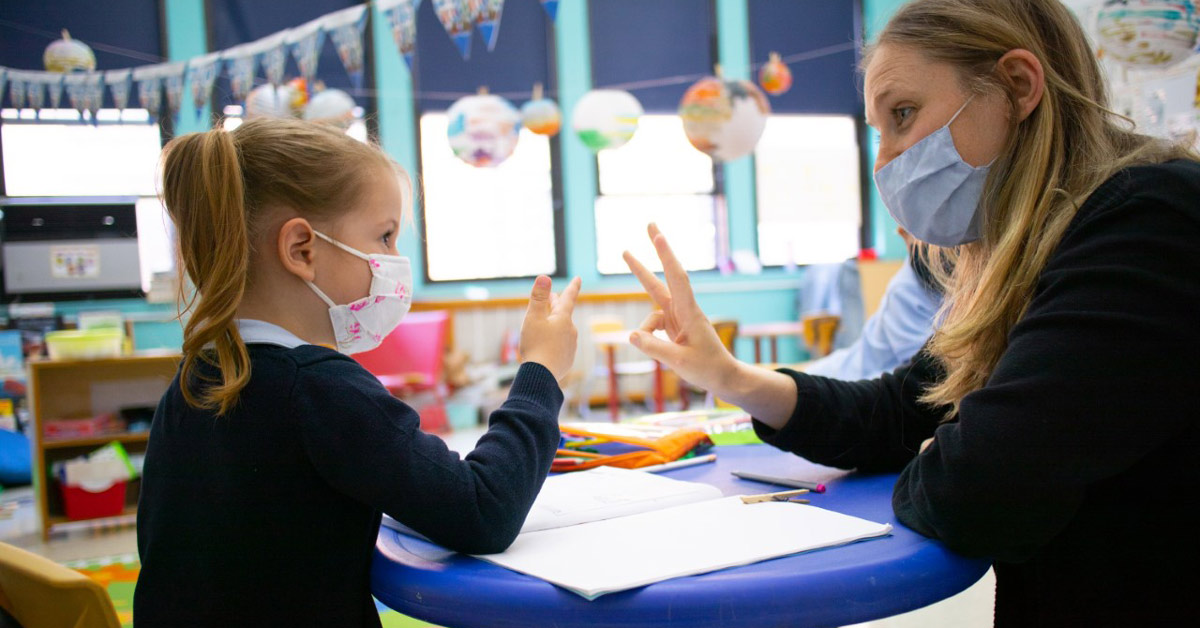
Teaching Children to Read Phonetically
Raising children to be confident and fluent readers is one of the primary goals of early education. The benefits of regular reading are widely known and children who learn to read at an early age often develop a lifelong love of books. That said, there are many different theories about how to teach reading.
Traditionally, students learned to recognize written letters and were then taught each letter’s phonetic sounds. Millions of children learned to read this way, but it is not the most efficient nor the fastest method. Instead, many schools like Nord Anglia International School New York, now use Synthetic Phonics—a system developed in the UK—that focuses not only on the sounds that go with each letter, but also on delivering them in the order of most frequently used.
When a child confidently recognizes a few sounds, the process of reading is introduced. A word is segmented into the separate sounds, for example ‘c’, ‘a’, ‘t’ and the sounds are then blended together to say the whole word ‘cat.’ As kids learn more sounds, they will be able to read more words; as they gain confidence and speed, they will start to sound out the words in their heads and then read them aloud.
This process is also used to teach writing—a child will segment a word into separate sounds and then write each phoneme in the order heard. By teaching sounds instead of the more traditional sight method, a child is given the tools to read any word, which makes him/her feel capable and confident and motivated to learn more.
At Nord Anglia International School New York, students are introduced to Synthetic Phonics in the Twos Program. Workshops are also offered for parents and caregivers to support learning at home. And parents often comment on how quickly their children start reading, how much they enjoy it, and how eager they are to practice—which of course is the ideal outcome for everyone.
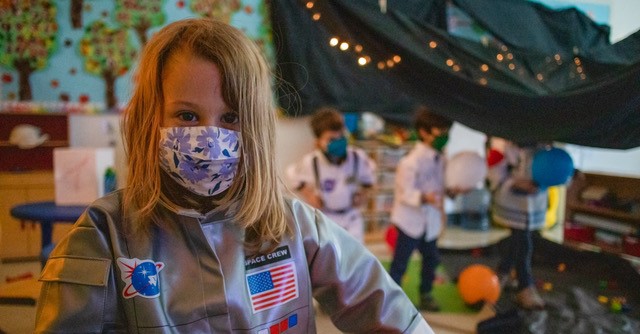
What is Child-Led learning?
In recent years, child-led learning has become the favored philosophy of many leading early-childhood education experts. The concept is simple: Children will engage more deeply with a topic that they find interesting, so teachers observe their interests and use them as a tool for engagement.
At Nord Anglia International School New York, teachers follow a child-led approach. As highly skilled observers, they are looking beyond the superficial and identifying teachable moments; they are encouraging students to follow their interests and ask questions. Each classroom has an extra teacher to help with this process, as well as the resources to encourage curiosity.
For example, the pre-K/Reception class showed an interest in space, specifically planets, so the teachers gave a lesson about the Mars mission, which was happening at that time. They also recreated the solar system in their classroom and pretended to travel to Mars in a class-made rocket.
Browse through the magazine version of the Nord Anglia early education guide.
There are many benefits to child-led learning:
- Encourages exploration and play, which helps build skills that translate into adulthood.
- Inspires a world view; strengthens memory; and teaches kids to use their senses.
- Builds critical thinking skills via pretend play and DIY games.
- Develops gross and fine motor skills, spatial awareness and self-control.
- Teaches kids how to manage emotions, interact with peers, negotiate and influence.
- Broadens vocabulary and story-telling skills.
- Boosts children’s self-esteem and helps develop their sense of self.
While educators are quickly getting behind child-led learning, there are several ways parents can help promote the process at home:
- Talk to your child’s teacher: Find out how they are encouraging meaningful play and using it to achieve educational outcomes.
- Use the same language at home as the teachers do at school.
- Explore topics that interest your child. If they are engaged, follow their lead.
- Don’t force it—your child will tell you what he/she is interested in. Listen to them and let their interests fuel their learning.
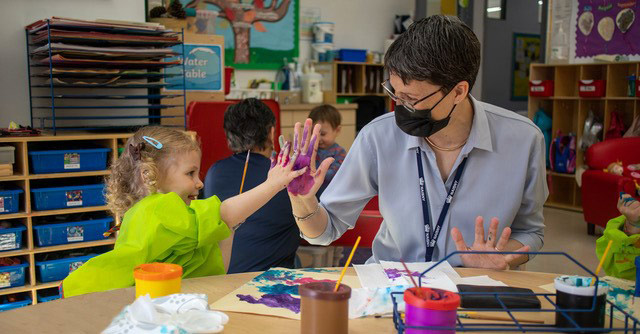
The Importance of “Scaffolding” in Education
“Scaffolding”—in the education world—is when teachers show students how to solve a problem before handing it over to them. For example, a teacher teaches the phonics and vocabulary from a section of text before asking students to read the text by themselves. It’s a way to support while simultaneously building independence. (A child who has been thrown in at the deep end will often lose confidence and stop enjoying learning.)
Many teachers use scaffolding strategies to encourage students to do their own research. For example, if the students are playing with water, the teacher asks open-ended questions: What would happen if we filled the water all the way to the top? The teacher might also offer hints to the answer: What can we do to stop the water from overflowing?
Another effective way to use scaffolding is by demonstration: The teacher fills the container to the top until it is overflowing, then shows students different materials for possible lids so that students may suggest trying them out. Demonstrating by doing is especially helpful with younger students.
During a class discussion, scaffolding allows students the time to process the materials and how they want to respond. Tools such as flash cards, real life objects, charts or anything that helps children come to a conclusion as independently as possible are also considered scaffolding tools.
In schools with small classes, like those at Nord Anglia International School New York, the teacher can provide scaffolding for different learning styles. This might take more time but investing time in each student and experimenting with different scaffolding strategies to suit the individual student will pay off in the future, with deeper learning and more engaged students.
Parents can use scaffolding at home as well. Instead of telling kids how to do something quicker or more efficiently, they can give them the time and support to work independently. Over time, children will feel more confident when facing a challenge and will be more successful when doing things on their own.
 Nord Anglia International School New York is a British international school in the heart of New York City. They are specialists in early child education and STEAM. Visit their website to learn more.
Nord Anglia International School New York is a British international school in the heart of New York City. They are specialists in early child education and STEAM. Visit their website to learn more.
